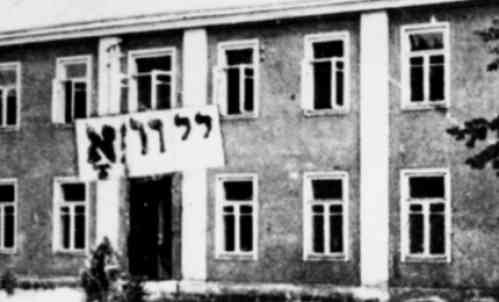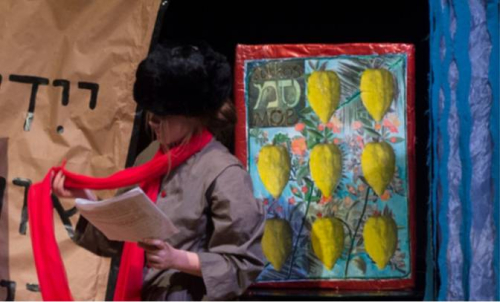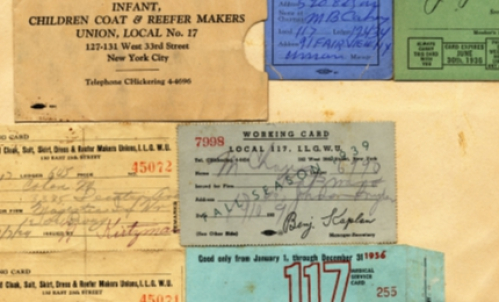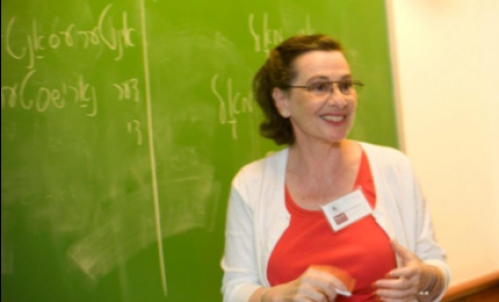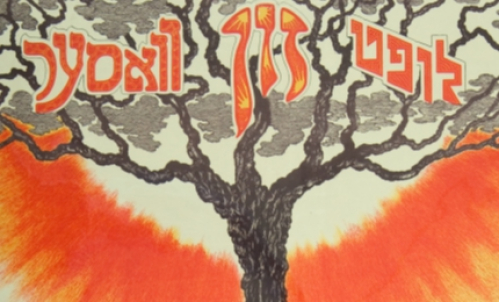The Klezmatics at YIVO on November 19th: Interview with Lorin Sklamberg
On Tuesday, November 19, 2013, The Klezmatics will receive a Lifetime Achievement Award at YIVO’s 88th Annual Benefit Dinner and will perform excerpts of a work-in-progress based on the Letters to Afar installation by Péter Forgács and The Klezmatics, (featuring YIVO’s unique collection of Polish Jewish home movies from the 1930s) at the Museum of the History of Polish Jews in Warsaw. Péter Forgács will also be at the event.
The Klezmatics are world-renowned superstars of klezmer. Since their emergence from New York City’s East Village in 1986, they have revitalized Yiddish music for the 21st century. The band has helped to change the face of contemporary Yiddish culture, not least through their career-long research and use of materials found in the Max and Frieda Weinstein Archive of YIVO Sound Recordings. They have performed in more than 20 countries, released ten acclaimed albums and served as the subject of a feature-length documentary film, The Klezmatics: On Holy Ground.
On October 9, 2013, The Klezmatics’ lead vocalist Lorin Sklamberg, who is also YIVO’s Sound Archivist, was interviewed by Yedies Editor Roberta Newman. (This is the first of a 2-part series.)
RN: How did the idea for doing a musical piece based on YIVO’s home movies come about?
LS: Well, the idea of writing music for the home movies sort of came from me, at the instigation of Frank London, who’s my colleague in The Klezmatics. We had been looking around for the next project we were going to do, and he said something about writing music for a silent film. But enough people have already done that, and so I thought, no, maybe something else. And then I remembered that at the time there was an exhibit here at Yeshiva University Museum of home movies from YIVO’s collection. So I went and took a look at them, and I said, “Oh! Well, wouldn’t that be in an interesting thing to do, because they’re all silent films.”
I presented the idea to the band, and people thought it was a pretty great idea. And then, a bit after that, YIVO signed an agreement with the new museum in Warsaw, the Museum of the History of Polish Jews, and we realized that Barbara Kirshenblatt-Gimblett, who’s a fan of ours and a friend of ours, was also involved there. So one thing led to another and we came up with the idea of having a joint project between The Klezmatics, the Museum, and YIVO. And then we were led by Andrew Ingall, a program officer at the Foundation for Jewish Culture, to Péter Forgács, a video artist who works with found footage, and that’s the story of how this came to be.
RN: This collaboration is a work-in-progress now, so how will it differ from what premiered at the museum in Warsaw?
LS: The installation was composites of films from seven or eight different cities. And each city is represented by a different installation in a very large space. What we want to do is to come up with a version of this that could be performed live – you know, in the way that you would play music with a silent film. The nature of the way the films have been treated by Mr. Forgács is a bit different from a straight-ahead narrative film. He’s manipulated the images in certain ways. Some of them have been slowed down, or colorized, or tinted, or there’s some close-up stuff. He’s sort of recycled things over and over again, used all sorts of different techniques for calling attention to parts of the films that intrigue him or interest him or move him in certain ways. So what we want to do is to make a performing version of this that will work, presumably with one screen and with us performing. That’s sort of the work that we have cut out for us, to try and make a representation of this in a live performing version.
RN: Do The Klezmatics have a special relationship with YIVO?
LS: The band has had an ongoing relationship with YIVO pretty much since the beginning of the band. The band started in 1986, and I think I originally started working at YIVO either at the end of 1986 or the beginning of 1987. My first stint at YIVO was as an administrative assistant to the late Adrienne Cooper, who was then the Assistant Director. And I eventually became graphic designer and Yiddish typesetter. At the time when YIVO was on 86th Street, I was on the fifth floor – as were you, Roberta, and I had easy access to the Sound Archive. I had access to all sorts of great recordings that were coming in, that were donated or that had already been catalogued here, and so the band has utilized materials from YIVO almost since the very beginning.
We also started relationships with other people who were interested in perpetuating Yiddish culture, who were idealistic and young(ish) at the time, and have become lifelong friends and colleagues.
Interview transcribed by Alix Brandwein and edited for length and clarity.
Return for more of this interview next week.
